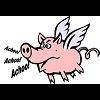duty cycle defined
Announcements
-
Latest Posts
-
I like it when the counter chick leads you out the back into the racks and says "have a grub around in here and see if you can find what you need. I'll be back in a few minutes. Just left me in front of a massive motorised shelving system and 2-3 million fasteners, so I could find a peculiar SS shoulder bolt with cap head. Gotta love country towns.
-
I used this https://osgiken.com.au/product/os-giken-os-250r-lsd-gear-oil-80w250-1-litre/ shut my nismo 1.5 pro up by heaps…. Not silent though. Gives the car character and personality. It ain’t a carolla. If you want silent, put a quaife in it.
-
It's about the same time for me from Bunnings, or the Fasteners. My big push away from takeaway food, and gluten in general keeps me away from the Bunnings Snags too! Weather up here, I've been out for two walks today in the beautiful sunshine. Had a few little drizzles, and some wind, that honestly, a tin of beans and I could compete on how harsh she blows Thankfully, being this bit inland, we're not getting anything much really. Will probably pick up a bit more when/if Cyclone Alfie decides to come ashore. A few areas in the GC though, and south into NSW are really getting smashed though! Right now, I'm just annoyed Alfie hasn't hit, as I'm not allowed to crack into the BBQ foods like the bacon and eggs until the Cyclone hits "In case we lose power"...
-
I love fastener joints, the price difference between them and joints like Bunnings or Super Cheap is amazing, and they either have exactly what you want, or they can get it to quick They have even given me some for free when I only needed a couple of specific size In saying this, I have paid premium for fasteners from Bunnings if they have the sizes I need, but only for convenience really, as my local is only 10 minutes away, the Sushi joint near them is also a consideration How's the weather Matt? Stay safe mate
-
By joshuaho96 · Posted
Wideband is worth setting up if only for tuning purposes. I would not mess with the ignition system unless there's a misfire. HKS crank trigger is popular out here for the relatively easily sourced Denso crank sensor, not a bad idea to install as well regardless of power level on a standalone. Boost leak test is worth thinking about. Oil pressure sensor tied to a fuel cut isn't a bad idea either. Getting the tune figured out is a good idea. Without putting eyes on it and getting under it there's no way for us to tell you exactly what it needs but most likely you're down to the last 10% that will make a big, big difference in how happy you are with the car.
-




Recommended Posts
Create an account or sign in to comment
You need to be a member in order to leave a comment
Create an account
Sign up for a new account in our community. It's easy!
Register a new accountSign in
Already have an account? Sign in here.
Sign In Now